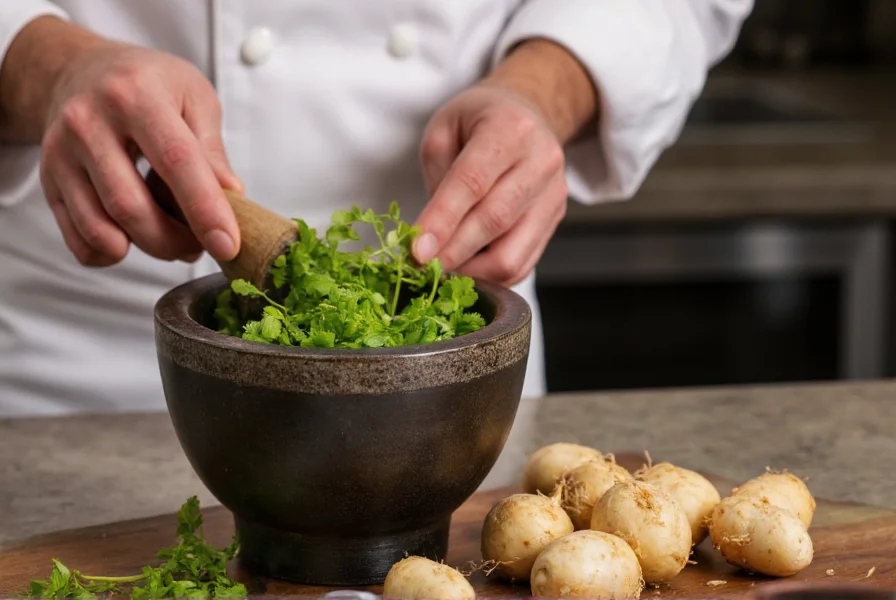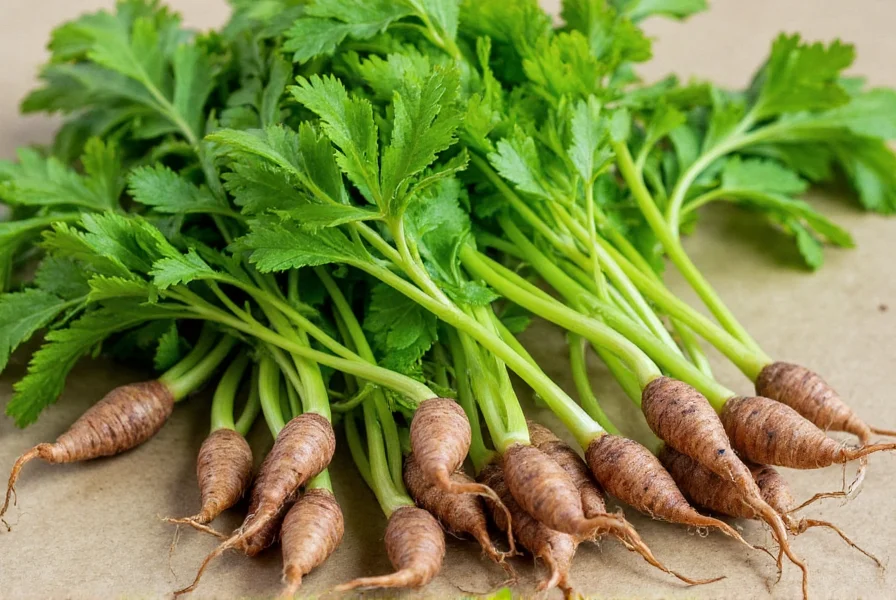Many home cooks and professional chefs wonder about the culinary potential of this often-overlooked component of the coriander plant. While most people are familiar with cilantro leaves and coriander seeds, the root offers a unique flavor dimension that can transform dishes when used properly.
Understanding Root Coriander: More Than Just an Herb Root
Root coriander comes from the same plant that produces cilantro leaves and coriander seeds, but it possesses a distinctive flavor profile that sets it apart. The root has a stronger, more complex taste than the leaves, with earthy, citrusy notes and a subtle peppery finish. This intensity makes it particularly valuable in dishes where you want coriander flavor to shine through other ingredients.
When examining root coriander vs cilantro leaves, the differences become apparent. While cilantro leaves offer a bright, fresh citrus flavor that can be somewhat delicate, the root provides a deeper, more robust essence that withstands longer cooking times. This makes it especially useful in simmered dishes where leafy cilantro would lose its character.

Culinary Applications of Coriander Root
The most celebrated use of coriander root appears in Thai cuisine, where it's considered essential for authentic curry pastes. Chefs traditionally pound the root along with other aromatics to create the flavor foundation for dishes like green curry and panang curry. The root's ability to blend seamlessly with lemongrass, galangal, and kaffir lime leaves makes it indispensable in these preparations.
When exploring how to use coriander root in cooking, consider these techniques:
- Add whole roots to soups and broths for subtle flavor infusion
- Mince finely for marinades where you want pronounced coriander flavor
- Blend into curry pastes for authentic Southeast Asian dishes
- Use as a garnish in shredded form for certain salads
- Include in stir-fry bases for added depth
| Coriander Component | Flavor Profile | Best Culinary Uses |
|---|---|---|
| Root | Earthy, intense, complex citrus | Curry pastes, soups, braises |
| Leaves (Cilantro) | Fresh, bright, citrusy | Garnishes, salsas, fresh salads |
| Seeds | Warm, nutty, citrus undertones | Spice blends, pickling, baking |
Selecting and Storing Root Coriander
Finding fresh coriander root can be challenging depending on your location. When searching for where to buy coriander root, check Asian grocery stores (particularly Thai or Vietnamese markets), specialty produce markets, or farmers' markets. Some larger supermarkets with extensive produce sections may carry it, especially those catering to diverse communities.
When selecting coriander roots, look for:
- Firm, crisp roots without soft spots
- Roots still attached to fresh-looking stems and leaves (indicates freshness)
- Moist but not slimy texture
- Earth-toned color without discoloration
Proper storage extends the shelf life of coriander root. Wrap the roots in a slightly damp paper towel and place them in a perforated plastic bag in your refrigerator's crisper drawer. This method typically keeps roots fresh for 7-10 days. For longer storage, freeze cleaned and chopped roots in ice cube trays with water or oil.
Preparing Root Coriander for Cooking
Before using coriander root, proper preparation is essential. The roots often come with soil attached, requiring thorough cleaning. Gently scrub the roots under cool running water using a soft vegetable brush. Trim off any excessively woody or fibrous sections, but don't discard smaller rootlets which contain concentrated flavor.
Unlike many root vegetables, coriander root doesn't typically require peeling. The skin contains valuable flavor compounds. For most applications, mince the cleaned root finely or pound it into a paste using a mortar and pestle—the traditional method that best releases its aromatic compounds.

Substituting Root Coriander When Unavailable
When you can't find fresh coriander root, understanding appropriate coriander root substitute options becomes crucial. While no substitute perfectly replicates its unique flavor, these alternatives can work in a pinch:
- Double the cilantro stems: The lower stem portions have more concentrated flavor than leaves
- Coriander seed paste: Grind seeds with a small amount of water for similar earthiness
- Culantro (Mexican coriander): Different plant but similar flavor profile
- Combination approach: Use cilantro stems with a pinch of ground coriander seeds
Remember that dried coriander root isn't commonly available and doesn't provide the same fresh flavor as the raw root. When substituting, add alternatives later in the cooking process since they lack the root's ability to withstand prolonged heat.
Growing Coriander for Roots
For those interested in growing coriander for roots, certain varieties perform better than others. Long-standing cilantro varieties like 'Slo-Bolt' or 'Calypso' develop more substantial roots than fast-bolting types. Plant seeds in well-draining soil with consistent moisture, and allow plants to mature for 6-8 weeks before harvesting roots.
When harvesting, gently loosen the soil around the plant and pull carefully to retrieve the longest possible roots. Shake off excess soil rather than washing immediately, then clean just before use. The leaves and stems remain perfectly usable alongside the roots.
Nutritional Profile and Health Benefits
While research specifically on coriander root is limited compared to seeds and leaves, it shares many beneficial compounds. Root coriander contains antioxidants, vitamins K and C, and various phytonutrients. Traditional medicine systems have used coriander root for digestive support and as a natural anti-inflammatory agent.
The essential oils in coriander root, particularly linalool, contribute to its distinctive aroma and potential health benefits. These compounds may support healthy digestion and provide antimicrobial properties, though more research specific to the root is needed.
Frequently Asked Questions
Is root coriander the same as cilantro root?
Yes, root coriander and cilantro root refer to the same ingredient—the root of the Coriandrum sativum plant. The terminology difference stems from regional naming conventions, with "coriander" commonly used outside North America for the entire plant, while "cilantro" typically refers to the leaves in American English.
Can I eat coriander root raw?
Yes, coriander root can be eaten raw, though it's quite fibrous and has a strong flavor. In Thai cuisine, it's often used raw in certain salads and relishes where it's finely shredded. Most commonly, however, it's cooked to mellow its intensity and integrate its flavor with other ingredients.
Why is coriander root important in Thai cooking?
Coriander root provides a foundational earthy note in Thai curry pastes that balances the brightness of cilantro leaves and the warmth of coriander seeds. Its ability to withstand pounding in a mortar and pestle while releasing complex flavors makes it indispensable for authentic Thai flavors, particularly in green and panang curries.
How much coriander root equals one stalk of cilantro?
Due to its more concentrated flavor, approximately one tablespoon of minced coriander root equals the flavor impact of one whole stalk of cilantro (including stems). When substituting, start with smaller amounts and adjust to taste, as the root's intensity can easily overpower a dish if used excessively.
Does coriander root taste like the leaves?
Coriander root has a similar flavor profile to the leaves but is more intense, earthier, and less citrus-forward. While cilantro leaves offer a bright, fresh note, the root provides deeper, woodier undertones with subtle peppery qualities. Many chefs describe the root as having the essence of the entire plant concentrated in one component.











 浙公网安备
33010002000092号
浙公网安备
33010002000092号 浙B2-20120091-4
浙B2-20120091-4